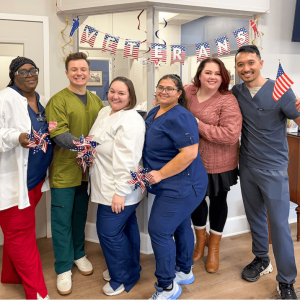
Use MRI to perform differential diagnosis between cysts and granuloma: yes or no?
Simona Chirico
Apical periodontitis is one of the most frequently problems found in endodontics. It is distinguished in its acute or chronic form. The acute form or abscess is characterized by the accumulation of polymorphonuclear neutrophils and is clinically accompanied by pain, swelling, inflammation. The chronic form can be characterized either by the granuloma or by the cyst. Granuloma has a well-developed fibrous capsule infiltrated by lymphocytes, plasma cells and macrophages. Instead the cyst can be distinguished in bay or pocket cyst when the epithelium-lined cavity is contiguous with the apex of the infected tooth; true cyst when the cyst has a cavity totally lined by epithelium and without communication with the apex.
Even if the histopathological response is considered the gold standard to differentiate a cystic from a non-cystic lesion, the diagnosis can only be performed after surgery. For this reason, we use radiological examination to identify these lesions. At the endoral radiological examination these lesions all appear radiolucent and it is not possible to differentiate them or establish the relationships they have with adjacent tissues and with the tooth itself, because they are two-dimensional images. Therefore we rely on Multislice computed tomography (CT) imaging. The problem is that this exam requires a large amount of ionizing radiation.
So Why don’t we use magnetic resonance imaging? It is non-invasive and can provide information on the structure of a lesion and its vascular components. In the study conduct by Lizio et al. they investigate the diagnostic reliability and accuracy of magnetic resonance imaging (MRI) to differentiate periapical lesions of endodontic origin and to compare the results with histopathological information.
MATERIALS AND METHODS
The radiolucent periapical jaw lesions of 34 patients, which were surgically enucleated, were investigated by two radiologists using MRI, based on the same six criteria, to categorize the lesions as granulomas, radicular cysts or others. After apicoectomies, two oral pathologists (blinded to the radiologist’s diagnoses) analysed all specimens by referring to seven specific parameters and diagnosed the specimens as granulomas, radicular cysts or other conditions. The inter-rater agreements between the radiologists and pathologists in terms of MRI and histological diagnose, respectively, along with the discriminant power of the adopted criteria and the accuracy of the MRI assessments compared with the histopathological results, were calculated. Cohen’s kappa test was adopted to examine inter-rater agreement between the two radiologists and two pathologists. Guttman’s lambda coefficient (k6) was used to evaluate the internal consistency of the items used for the differential diagnosis by radiologists. The accuracy resulted from a receiver operator characteristic (ROC) analysis.
RESULTS
A strong inter-rater reliability was observed between the two radiologists (k-statistic= 0.86, P= 0.0001) and the two pathologists (k-statistic= 0.88, P= 0.0001). The internal consistency of the diagnostic items was 0.605 for cysts and 0.771 for granulomas. The accuracy (true positives plus true negatives) of the radiologists was greater than that of the pathologists based on analysis (area under the curve= 0.87 and 0.91, respectively).
CONCLUSIONS
This trial demonstrates the reliability and accuracy of MRI as a non-invasive, pre-treatment diagnostic method for differential diagnosis between cysts and granulomas. In future, this technology should be used to verify the efficacy of root canal treatment.
For additional informations:
Differential diagnosis between a granuloma and radicular cyst: effectiveness of magnetic resonance imaging
 Related articles
Related articles
Endodontics 20 November 2025
The complexity of restorative dentistry has increased greatly in recent years, with the myriad of products used in “adhesive dentistry.”
News 03 October 2025
Excel Endodontics, a new specialty dental practice founded by endodontist Dr. Rachel Halpern, is proud to announce its official opening in Marlboro, New Jersey, along with the launch of its new...
Endodontics 01 October 2025
Obliteration of the root canal system due to accelerated dentinogenesis and dystrophic calcification can challenge the achievement of root canal treatment goals.
Products 17 September 2025
Modern Micro Endodontics is pleased to announce the opening of its newest location at 356 Broadway in Bayonne, New Jersey. This expansion strengthens the practice’s.
A new dual-cured resin sealer has recently been proposed as an innovative endodontic filling material.
 Read more
Read more
Implantology 21 November 2025
In 2004, a survey of the deans of U.S. and Canadian dental schools was conducted to determine the implant dentistry curriculum structure and the extent of incorporating implant dentistry clinical...
Editorials 21 November 2025
Products 21 November 2025
Curve Dental, the leading provider of all-in-one, cloud-based dental practice management software, recently announced a new strategic integration partnership with DentalHQ, a premier patient...
News 21 November 2025
GreenMark Biomedical Inc., a company developing innovative solutions for oral health, earlier this year was awarded funding via the Translational Resource Center (TRC) regenerative medicine program,...
News 21 November 2025
In honor of Veterans Day, Dental365 hosted its annual Free Day of Dentistry for Veterans on November 9, 2025, offering complimentary dental care to veterans across multiple locations in four...















